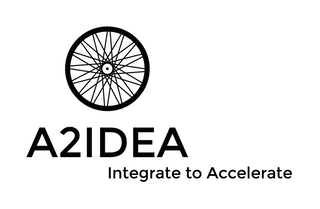Did everyone see this article in the NYTimes: Why are there so few new drugs invented today? It’s hard to open even Forbes Magazine and not hear about the promise of personalized medicine brought to you by the genomics revolution. Sounds familiar, huh? Time warp back to 1990 and the proteomics revolution. Now get out your crystal ball to look forward to see the metabolomics revolution. Come on people, the language used is SO SENSATIONAL. Sure, many technologies, the stream of knowledge, communication and downright genius problem solving are indeed bringing therapies to people that good ol’ fashioned natural selection would have done in years prior.
Is it really all that surprising that the personalized medicine triumphs are often orphan, very targeted and rare diseases? Those that have ONE genetic aberration causing a very clear-cut phenotypic disease have a successful small molecule therapy. But, can we really expect the BIG THREE multi-factorial diseases, those in such high numbers, heart disease, cancer, and stroke to be a one target, one bullet solution. Of course not. So, why are there so few new drugs invented today? Here’s my top 5 reasons why.
STRUCTURE does not always equal FUNCTION.
Small molecule drugs are chemicals and have structure. Those with similar structures fall in the same class. These structures then fit (lock and key, hopefully) into a biological structure, in most cases proteins. Then, each protein belongs to groups with structural similarity. And here’s the hitch, or genius, if you will. One chemical might fit into every protein in its class and well, all those proteins may do different things. They may do similar, they may do similar PLUS additional, they may do similar in one location and opposite in another location. Combinatorial possibilities people. On the other side, a chemical might fit one protein, or many proteins. Every chemical in a class of structurally related chemicals might ALL fit that one protein, or they might target additional classes of proteins. More combinatorial possibilities. When you think about it, it’s actually pretty amazing we have the arsenal of effective and non-catastrophic drugs we do.
People are different.
Say WHAT>>>> yea, obvious, duh. BUT, this heterogeneity is one of the main reasons we need many, many people to prove that the drug has the predicted, non-detrimental effect in most people. This means, trials, lots of people, lots of time, lots of trials. To get a drug through the clinical trial phases I/II/III to approval is on average as of 2009, $ 30 Million dollars. It’s $ 10 Million more just to get a drug into a human, i.e., preclinical costs. A phase I trial involves approximately 100 people. Phase II ~ 300 people and then Phase III ~ thousands of people, like 3,000 - 10,000. Enough people to find small effects. We have to design the trial to have enough statistical power for any result to be real. By the way, the data above was obtained from the Manhattan Institute and it’s a good read even if you’re not all that into these numbers.
Ok, so one target, one drug, many people and various weights.
The entire pharmaceutical business model, from R&D, to marketing, personnel and organization structure is built around bringing one drug to selectively alter one target to many people. Given the above points, that’s a lofty goal to set upon an entire industry. Risk-benefit says, those targets or drugs that are deemed promiscuous, functioning in more than one job, or drugs that bind to many ‘off-targets’ will be shelved sooner than later during discovery. Costs increase as the drug progresses towards approval. For it’s chosen indication, a drug at a 15% chance of being nominated for Phase I, has a 67% chance of succeeding to Phase II, 39% chance of Phase III, 68% chance of getting a written New Drug Application and 86% chance of gaining approval for use. If my factorial math is correct, that’s 2.3 % chance a drug will make it to general patient use for it’s chosen indication. If all indications are tested it’s 1%, because lightning may strike, it didn’t seem to work for heart disease, but did uniformly cause an erection. That actually doesn’t seem bad if you think 1 out of every 100 drug entities will make it, but let's not forget, statistically, it’s not a roulette wheel, there are various weights on the drug discovery/development road, some highly complex and variable. For instance, say the Director of Group A in Company B has a daughter with Disease X??? Will more drugs be nominated by Group A for Disease X?
Missing Heritability, the chicken and the egg.
Those BIG THREE diseases are diseases of age and environment, by and large. While the genetic landscape changes over the course of time, I don’t believe there’ll be a discrete genetic component for cerebral hemorrhage or congestive heart disease, or chronic obstructive pulmonary disease. It’s the chicken and the egg question, does the phenotype result from genetic changes or do the genes change as an adaptation of the phenotype? And like cancer, if we successfully target one aberration, will another take it’s place albeit through a different mechanism.
Biology is just complex
I don’t believe I need to say more.
So, why is personalized medicine the ‘WAY of the FUTURE’? Seems to me, we haven’t been all that successful with personalized medicine and targeted therapies. Here’s my thoughts; let’s look at A LOT of data, and I mean A LOT, and watch it self segregate or cluster on it’s own. Use generalized therapies to subdue symptoms and stop looking for the cure-all, but rather to improve quality of life by living symbiotically with disease.

